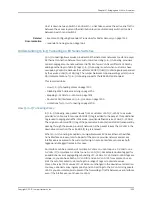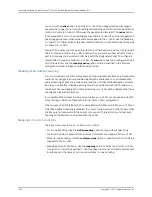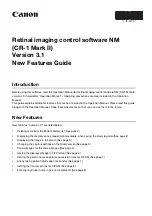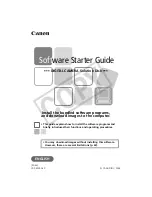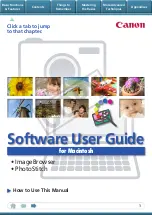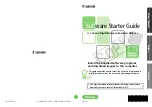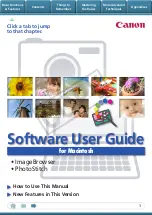
The VLAN registration information sent by MVRP and GVRP includes the current VLANs
membership—that is, which switches are members of which VLANs—and which switch
interfaces are in which VLAN. GVRP and MVRP share all VLAN information configured
on a local switch.
MVRP can also be used to dynamically create VLANs, which are VLANs created on one
switch and propagated to other switches as part of the MVRP message exchange process.
As part of ensuring that VLAN membership information is current, GVRP and MVRP
remove switches and interfaces from the VLAN information when those switches and
interfaces become unavailable. Pruning VLAN information has these benefits:
•
Limits the network VLAN configuration to active participants only, reducing network
overhead.
•
Targets the scope of broadcast, unknown unicast, and multicast (BUM) traffic to
interested devices only.
Routed VLAN Interface
In a traditional network, broadcast domains consist of either physical interfaces connected
to a single switch or logical interfaces connected to one or more switches through VLAN
configurations. Switches send traffic to hosts that are part of the same broadcast domain,
but routers are needed to route traffic from one broadcast domain to another and to
perform other Layer 3 functions such as traffic engineering. EX Series switches use a
Layer 3 routed VLAN interface (RVI) named
vlan
to perform these routing functions,
using it to route data to other Layer 3 interfaces. The RVI functions as a logical router,
eliminating the need for having both a switch and a router.
The RVI (the
vlan
interface) must be configured as part of a broadcast domain or virtual
private LAN service (VPLS) routing instance for Layer 3 traffic to be routed out of it. The
RVI supports IPv4, IPv6, MPLS, and IS-IS traffic. At least one Layer 2 logical interface
must be operational for the RVI to be operational. You must configure a broadcast domain
or VPLS routing instance for the RVI just as you would configure a VLAN on the switch.
Multicast data, broadcast data, or unicast data is switched between ports within the
same RVI broadcast domain or VPLS routing instance. The RVI routes data that is destined
for the switch’s media access control (MAC) address.
Jumbo frames of up to 9216 bytes are supported on an RVI. To route jumbo data packets
on the RVI, you must configure the jumbo MTU size on the member physical interfaces
of the RVI and not on the RVI itself (the
vlan
interface). However, for jumbo control
packets—for example, to ping the RVI with a packet size of 6000 bytes or more—you
must explicitly configure the jumbo MTU size on the interface named
vlan
(the RVI).
CAUTION:
Setting or deleting the jumbo MTU size on the RVI (the vlan
interface) while the switch is transmitting packets might result in dropped
packets.
See “Configuring Routed VLAN Interfaces (CLI Procedure)” on page 1379.
Copyright © 2010, Juniper Networks, Inc.
1288
Complete Software Guide for Junos
®
OS for EX Series Ethernet Switches, Release 10.3
Summary of Contents for JUNOS OS 10.3 - SOFTWARE
Page 325: ...CHAPTER 17 Operational Mode Commands for System Setup 229 Copyright 2010 Juniper Networks Inc ...
Page 1323: ...CHAPTER 56 Operational Mode Commands for Interfaces 1227 Copyright 2010 Juniper Networks Inc ...
Page 2841: ...CHAPTER 86 Operational Commands for 802 1X 2745 Copyright 2010 Juniper Networks Inc ...
Page 3367: ...CHAPTER 113 Operational Mode Commands for CoS 3271 Copyright 2010 Juniper Networks Inc ...
Page 3435: ...CHAPTER 120 Operational Mode Commands for PoE 3339 Copyright 2010 Juniper Networks Inc ...
Page 3529: ...CHAPTER 126 Operational Mode Commands for MPLS 3433 Copyright 2010 Juniper Networks Inc ...




















